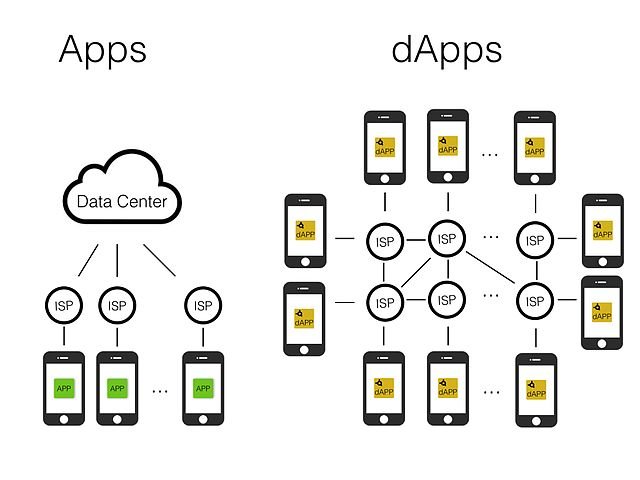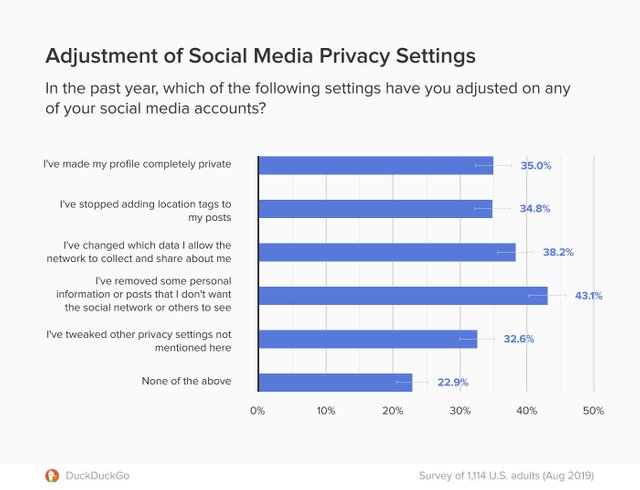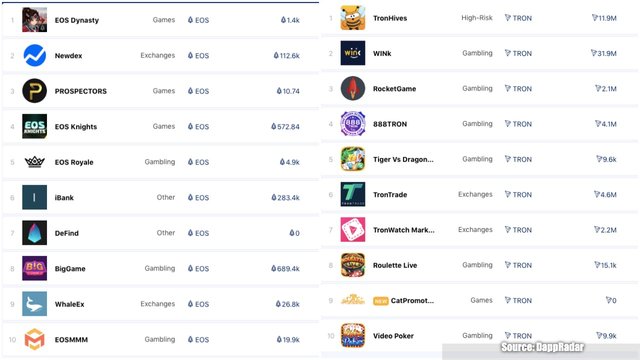"DApps!" A New Buzzword, or Here to Stay for Good?

For the last few months, there’s been a new hot topic in crypto circles: DApps! Even as someone with a beginner’s understanding of blockchains, cryptocurrencies and its related environments, I hadn’t heard of the term ‘DApp’ until quite recently. But ever since, I’ve been deeply intrigued by them and their potential to change the way we perceive and interact with apps.
Often pronounced "Dee Apps" or sometimes simply “dapps”, it stands for Decentralized Apps. And as the self-explanatory name suggests, the basic principle where DApps differ from apps is the concept of ‘decentralization’. Some examples of dapps: Airtext, Blockstream, BentenSound, ImageOptimizer, block.one.
Whereas traditional apps store data on a single centralized server, DApps make use of a distributed, self-sustained network of computers to store platform and user data. The earliest form of this was born with peer-to-peer (P2P) services like Napster and BitTorrent. But with the advent of blockchain, DApps can now not only share data across a distributed network, but also maintain a permanent and immutable record of it ‘on chain’. This makes transactions more transparent since any user can verify the record for themselves.
Think of it as carpooling, but for your data. Imagine you have a car that you don’t use too often. And let’s say you have a couple of friends who really need to get to that concert several hundred miles away. So you lend your car to your friends and in turn, they return the car with more fuel than it originally contained and maybe give you some concert passes too! In this loosely constructed metaphor, the car is the processing power required to transact on the blockchain and the extra fuel and the concert passes act as the token rewards.
Key features of a DApp
Fundamentally, to be called a blockchain-based DApp, the code needs to be open sourced and data (related to operations of the DApp and usage) stored cryptographically on chain or a decentralized storage.
Then, DApps use smart contract to interact with the chain they’re built on and retrieve data for the users and the platform. Depending on the purpose and function of the DApp, and the level of security and visibility desired, decentralized applications can be built on one of several smart-contract-friendly blockchains like Ethereum (which was the first to offer smart contracts), EOS, TRON, and NEO. They can even use their own blockchain if they choose to put in the effort of building one from scratch.
Another feature common to DApps is the concept of tokenization. Since DApps rely on their users for the processing power required to keep the network running, they incentivize users for their efforts with a digital currency or a cryptographic token issued on the blockchain of operation. These tokens tend to have a specific utility.

Conceptually, all the above-listed features make dApps more secure, resilient and transparent. And in this era where data has overtaken oil as the most valuable resource, data security and privacy are hot topics that are frequently in the limelight - topics that most dApps keep their crosshairs firmly locked on.
How often do we hear about hackers walking off with thousands of passwords and sensitive data? Whatsapp, Instagram, Facebook, Twitter - they’ve all been hit with some major data breach controversy at least once. The problem here is that all the data is stored in a centralized system. And this creates one central point of failure in the event of a breach. Since dApp data is decentralized, even if one point or node in the network is breached, other nodes in the network can securely reinstate all data. It’s worth pointing out here that the effort that hackers need to put to breach multiple points/nodes is significantly high and this, by default, prevents network wide breach from taking place.
Ever since the roof was blown off the Cambridge Analytica scandal, netizens are more and more aware of the growing need for online privacy. A recent survey by DuckDuckGo concluded that “79.2% of people have adjusted privacy-related settings on their social media accounts or reduced their social media usage”. dApps are sensitive to this growing need for privacy.

We’re all too familiar with big companies behind traditional apps chasing profit and their own interests, sometimes even at the expense of the user’s online privacy (the image of Mark Zuckerberg being summoned to testify in front of the American Congress and being grilled by Alexandrio Ocasio Cortez pops into the mind!).
With dApps, there are several checks and balances to increase both privacy and transparency. For starters, the code of a DApp is open sourced and anybody can take a look at it and verify the intentions of the creator. dApps also easily facilitate anonymity of the user since their transactions need not be linked to their real world identity. For instance, to use a dApp built on EOS, all you need is an EOS account. This account is coupled with private key and a public key. As long as you have your secret private keys (which act as the password to access the DApp as well), you don’t need to disclose any more real-life information to the DApp.

DApps also allow users to control access to their data. DApp creators don’t keep or save any user data. When a user logs into a DApp, the user grants the DApp the permission to read existing or write new data to the employed blockchain - a distributed ledger wherein data is immutable, publicly verifiable, and inviolable. When the user logs out, the DApp no longer has access to the user data. This prevents the company/creator behind the DApp from sharing sensitive user information with third parties, a practice that has become all to common these days with traditional apps.
So if DApps are so awesome, why haven’t we all switched to them yet?
One reason is that blockchain is a fledgling technology and like any other novel technology, it comes with its own set of challenges.These include scalability, transactional limitations of the employed blockchain, dealing with transaction fees and governance, among other things. Ethereum has been repeatedly called out in recent times for its inability to scale to large volumes of transactions as promised. Meanwhile, even as I write this piece, there is a congestion on the EOS network (apparently caused by the airdrop of a new token) that has drastically driven up the processing power (and in turn the cost) for performing a transaction on the network. Solutions for such issues don’t pop up overnight. Moreover, since governance changes on a blockchain require consensus from a large number of users, radical changes are slow to come by since everybody needs to get on the same page.
Another challenge for DApps in line with most new technological developments is the struggle to find a steady base of users. In spite of the boom in crypto-related search interests and a surge in blockchain use cases and applications, the average netizen is perhaps largely unaware of dApps. I myself discovered them quite recently in spite of having already bought into the idea of a crypto-enabled world. And it probably would’ve slipped under my radar too if my day job did not involve working closely with a DApp on a daily basis.
We humans are creatures of habit and traditional apps have habituated us to a certain ease of access and convenience. To break the habit and give up these conveniences seems difficult. Moving from passwords to private keys, from payment gateways and credit cards to crypto tokens - these could seem overwhelming to the average netizen, especially one who has never interacted with the blockchain and crypto space before.
There are a couple thousand existing dApps today, with EOS, Ethereum and TRON being the three networks with the highest number of dapps and daily users. Interestingly, as you can see below, the majority of the dApps fall under either the gaming or gambling category. The reason we have so many gambling dapps could be because it is the most obvious and low-hanging fruit arising from the culmination of all the features of dapps mentioned above: Tokenization creates a loophole so that you can get around the restrictions of using your local fiat currency and the permanence of record on the blockchain makes the game transparent. But even these dapps are in their early days and not free from errors and security breaches.

This is a common criticism that dApps face - that the limitations of the technology will keep them from advancing beyond gambling platforms. I personally don’t think this is true. dApps today exist - in design and scale - similar to what the internet was back in the early 90s. In the pre-dotcom bubble days, very few people ever saw it growing beyond message boards and chat forums. But with multiple waves of innovation and mass adoption, it morphed into a life-changing tool that is so ubiquitous that some of us (looking at my fellow millennials) can’t fathom surviving without it.
The blockchain era is seen by some industry experts as the precursor to Web 3.0 and “the new internet”, a restoration of the values that embodied the spirit of the early internet - a free and open space for exchange of ideas, devoid of opportunists trying to commercially exploit users for their own interests. In the early days of blockchain, when Bitcoin was the sole product out there, the technology was limited to a decentralized and secure store of value. With the advent of dApps, there are more use cases for blockchain than ever before. From decentralized social media platforms to marketplaces and exchanges; from games to collectibles - dApp builders are diversifying across a wide range of socio-economic genres.
In the near future, if dApps manage to address and solve some of the earlier mentioned hurdles, supported by a rising awareness among netizens, they could pave the way for mass adoption of blockchain-based technologies. After all, who in their right mind would not want a fairer, more secure and transparent experience online!